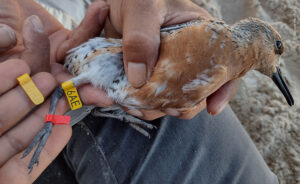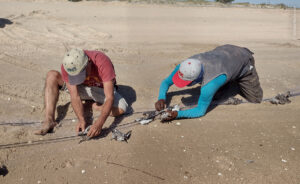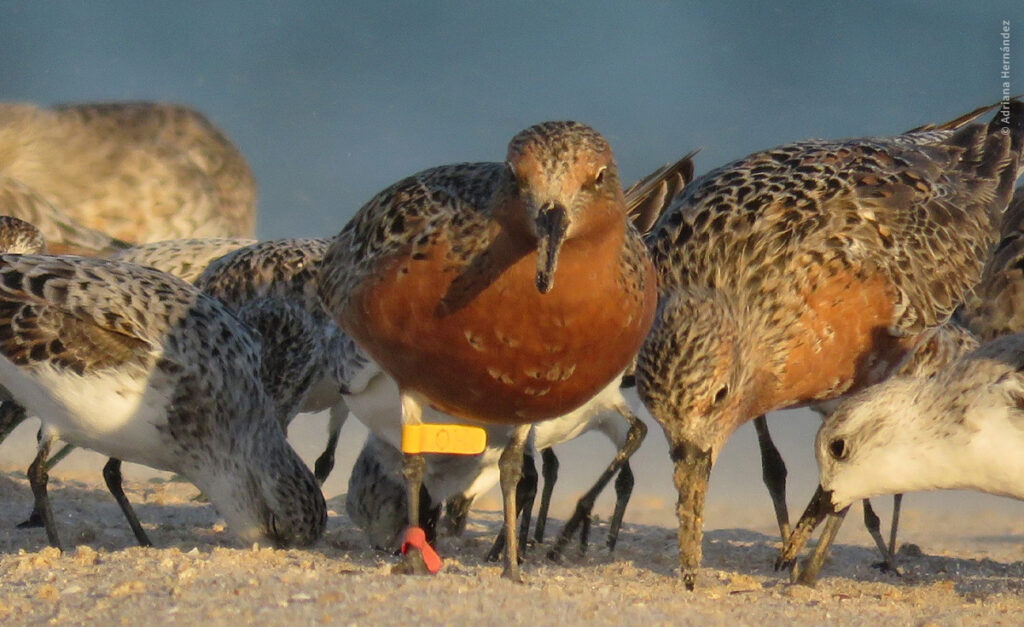In an event to celebrate, during a shorebird capture, marking and release campaign in the month of April, a team of Pronatura Noroeste found a specimen of Pacific beach reddish which was marked 12 years ago.
"We were pleasantly surprised to find this little survivor in healthy condition, which represents a success story for conservation in Mexico," the environmental organization notes in its blog.
The records show that this specimen of at least 13 years of age is a regular visitor to the Gulf of Santa ClaraIt has been observed year after year, with periods of stay of up to three months that coincide with the spawning period of the silverside (Leuresthes sardina), a fish similar to the sardine, which is one of its main food sources.
Upon review, the Pronatura Noroeste detected that its old marker had lost ink in the code and the plastic showed advanced signs of wear, so it was replaced by a new one that will serve to continue monitoring its continental voyages.

This species (Calidris canutus roselaari) breeds at Alaska and each winter it travels thousands of kilometers in search of better weather conditions, food sources and shelter, according to the press release.
These birds travel across the continent several times in their lives, stopping over in beach ecosystems such as the Gulf of Santa Clarain the Upper Gulf of California and Colorado River Delta Biosphere Reserve. This site concentrates more than half of the total population of the Red Knot, a bird considered in danger of extinction.
Pronatura Noroeste indicates that the Pacific Red Knot is a species highly sensitive to habitat loss, disturbance, pollution and climate change.
"If the flocks do not find the necessary conditions in the receiving ecosystem, they can suffer considerable population losses," he says.
Biological monitoring allows us to follow up on the health status of the tagged specimens and their populations.
As a result of the journey, Pronatura Noroeste recorded a maximum abundance of 1,200 reddish sandpipers in an area of 35 kilometers of beach.

Eleven specimens were captured, measured, weighed and tagged with flags, codes and hybrid tags. These tools will be used to monitor their continental movement through the Motus antenna network.
Source: Pronatura Noroeste


